The pedestrian alleys crisscrossing Jaffa’s Flea Market are lined with bars and restaurants, and at first glance, Raisa is typical of most of them: plenty of al fresco seating flanking the entrance, and a dimly lit interior dominated by two bars and long tables, where lively music plays.
What sets Raisa apart is the pedigree of its chef and co-owner: Uri Levy, who trained with the best in Israel and the world: under Sharon Cohen at Shila in Tel Aviv, and at L’Atelier de Joel Robuchon, a two-star Michelin restaurant in Paris. He has designed a menu that has something for everyone, including vegetarians and vegans, and he knows how to take a seemingly mundane dish and turn into something special.
Nevertheless, before getting down to ordering food, it is worth commencing with a couple of drinks. The cocktail menu lists a mixture of classics and house specialties, although on the evening of our visit, two of the latter were unavailable. Fortunately, that left still left us with two interesting choices: the Jack Sparrow and the Little Prince.
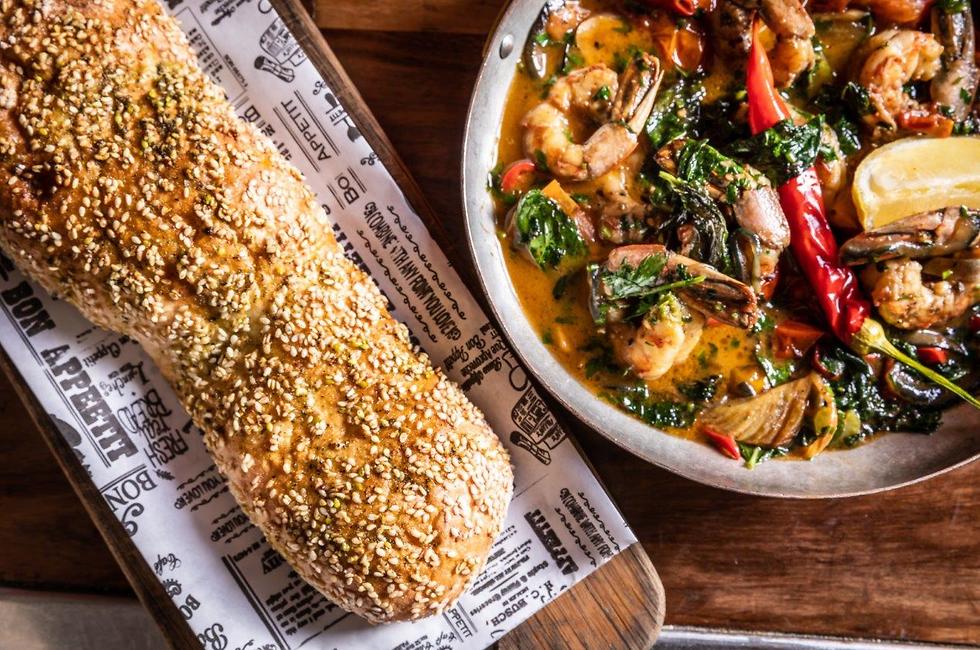
The Jack Sparrow—rum, pineapple juice, banana, caramel and lime juice, garnished with a slice of lemon and served on the rocks in a tall glass—was sweet but nonetheless refreshing, while the Little Prince—cognac, aged rum, cinnamon, orange and lemon—packed quite a punch.
The menu comprises five categories: Starters, which are more like dips or condiments than real appetizers; Land, six vegetable dishes; Sea, four entrees of fish or seafood; and Meat, with choices of lamb, beef or chicken. Four desserts are listed under the heading Sweets.
One of the starters is the house bread—a Jerusalem bagel that is fluffier than the original version—served with tiny saucers of tehina and spreadable white cheese; in order to add what turned out to be just a dollop of tomato salsa with skhoug, we had to shell out another NIS 10. This was particularly galling, since on the whole, the prices at Raisa are very reasonable.
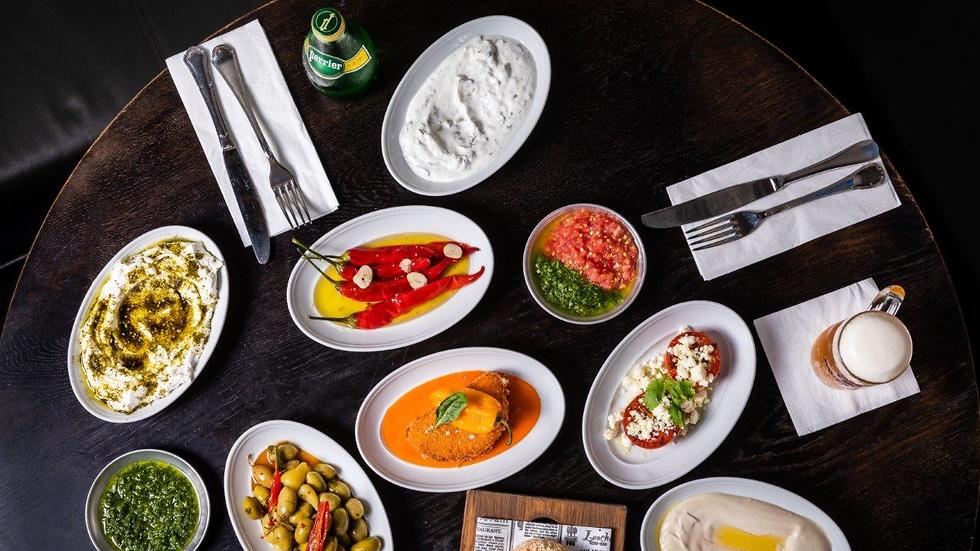
Another starter was something called a “hot plate” on the English menu; we had to turn to the Hebrew menu to learn that it actually refers to a plate of spicy peppers. It was not the only instance where the English was either opaque or misleading: we almost did not order the dish described as chicken thighs, until the Hebrew made it clear that it was really pargit (pullet).
We began our meal with the cauliflower and black tehina—although the sesame sauce was gray, at the most. Still, the florets were al dente and delicious, enhanced nicely as well by green herbs, pickled shallots and hot and sour peppers.

Our second vegetable dish was “fired” eggplant carpaccio—although the word carpaccio does not appear in the Hebrew, nor was the aubergine sliced carpaccio-style. Nevertheless, this was an outstanding dish: the mellow eggplant—complemented perfectly by tehina, pine nuts and chili, plus a touch of sweetness provided by date syrup—practically melted in the mouth.
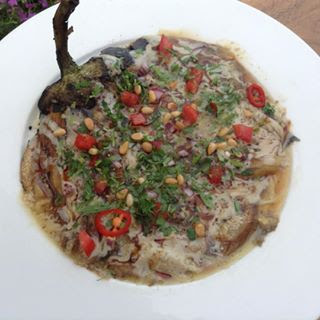
Moving on to the Sea category, we selected the “hot pan” of shrimps in a sauce of arak, fennel, okra, spinach and tomatoes. I am not a fan of arak on its own, but the anise liquor gave a whole extra dimension of flavor to the plump, juicy shrimp. And we finally had something worthy in which to dip our bread.
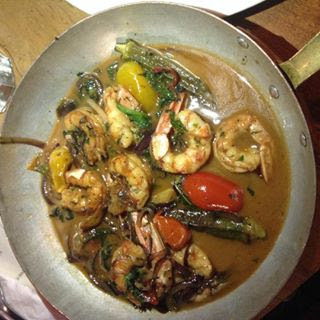
Finally, our two dishes from the Meat category exceeded expectations. The Hebrew menu (only) brags that Raisa’s lamb “cigars” are “not your (usual) wedding fare”—and the fat, golden-brown cylinders of phyllo pastry stuffed with ground lamb seasoned with cinnamon and flecked with mangold made this no idle boast. I don’t eat this Moroccan delicacy often, but these are about the best I have had.
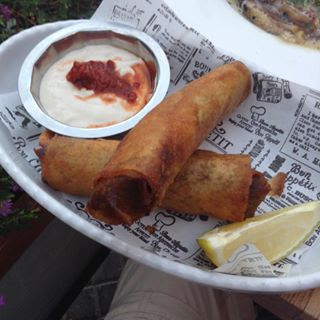
The “butter chicken Bagdad (sic) style” was a generous skewer of morsels of pullet atop a large lafa, slathered with yogurt and presented amidst homemade pickles, arugula and mint. It was quite a big portion, but we had no trouble polishing off this exceptional interpretation of what could have otherwise been a humdrum dish.
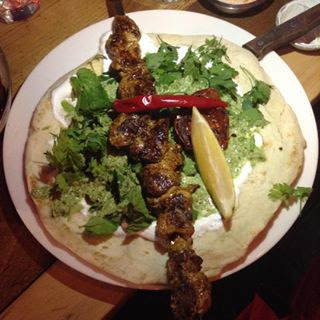
The desserts here, though, are quite another matter. Not that they are bad; it’s just that they are so commonplace, especially in comparison to the creative, Middle Eastern-inspired dishes heretofore.
Three of the four are Western standbys, served in just about every run-of-the-mill restaurant in Israel. With only malabi hinting at Levantine origins, we settled on crack pie and cheesecake; both were acceptable, but disappointing emanating from a kitchen helmed by the gifted Levy.
I was expecting some interesting variations on kanaffeh or basbousa or the like; it is to be hoped that Levy puts his mind to fashioning desserts worthy of his talents—and gets someone to fix the menu’s incredibly sloppy English.
No comments:
Post a Comment